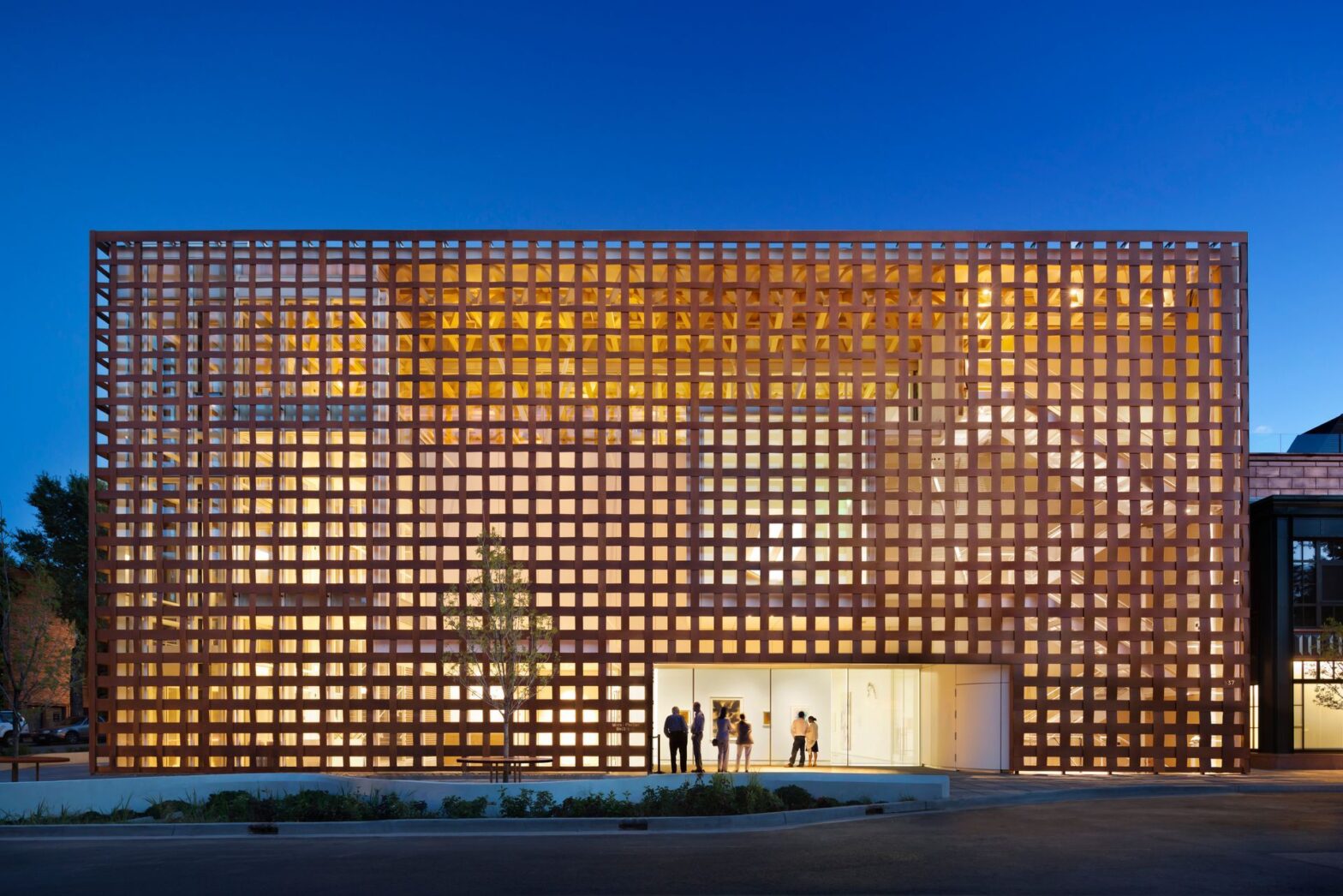Engineered Wood, a modern building material that is rooted in the findings of the past, has redefined the construction and construction industry in the design of sustainable and environmentally friendly forms. An alternative to the steel and concrete of the 20th century is durable, versatile and combines natural warmth with the latest technology. Known as mass wood, it transforms the structure of residential and commercial architectures. When we enter a new era of innovation, the sustainable and ecologically friendly form focuses on elegant and strong solutions for modern skyscrapers, public spaces and retail stores.
What is technical wood?
The technical wood is generated by binding strands of veneer, strands, particles or wood fibers together with adhesives, which optimizes their strength, stability and performance. It makes it possible to build larger, robust rooms and more complicated structures and at the same time maintain lighter, more flexible frameworks. A diverse collection of products, including cross-laminated wood (CLT), laminated veneer wood (LVL) and glued laminated wood (glulam), is used on the market to design high-rise constructions and add modern rooms to an organic element.
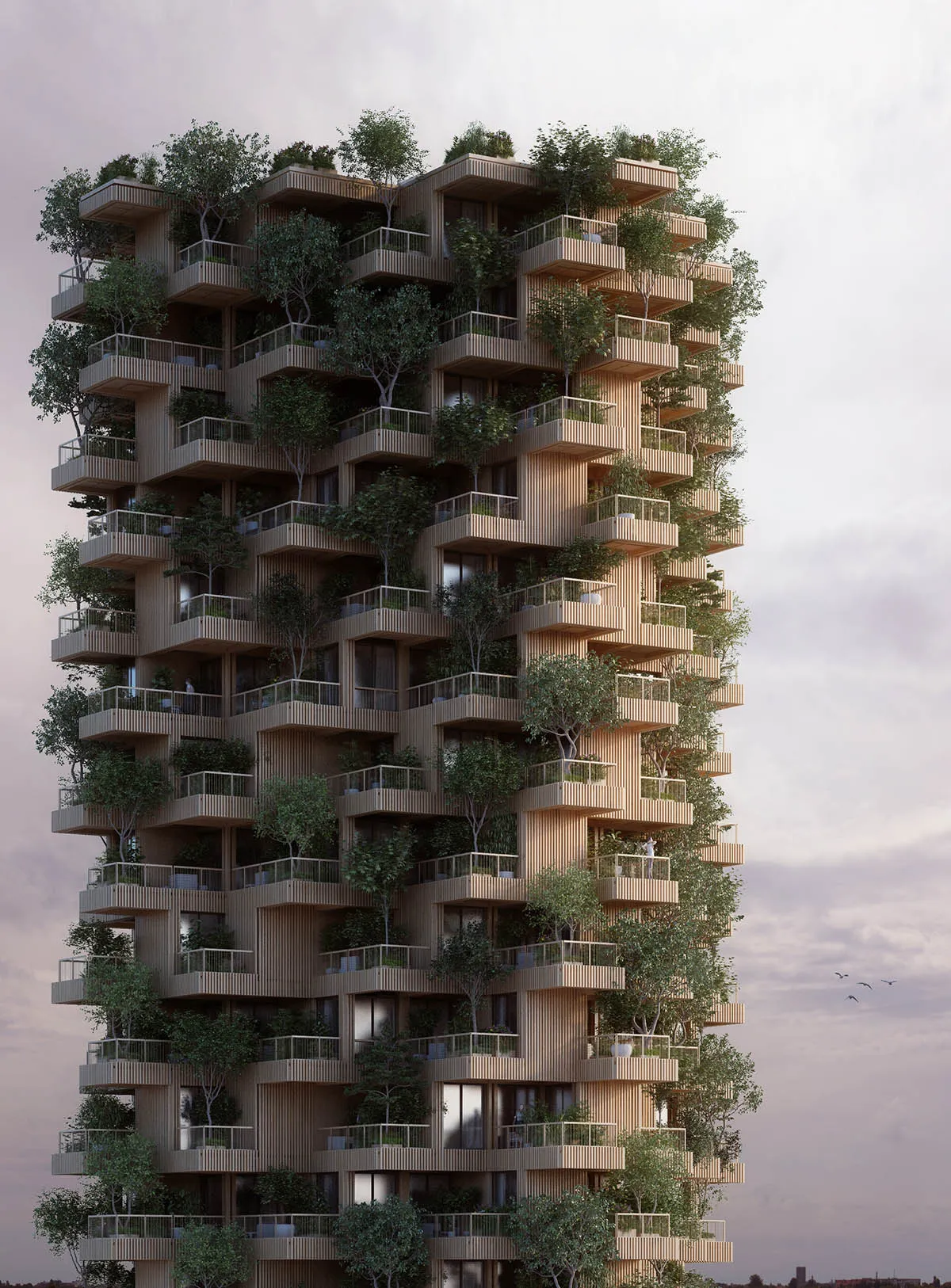
Let us immerse yourself in 10 inspiring structures, which are made of technical wood as a structural material, improves environmentally conscious architecture, energy -efficient houses and sustainable skyscrapers.
1. Puukuokka apartment block
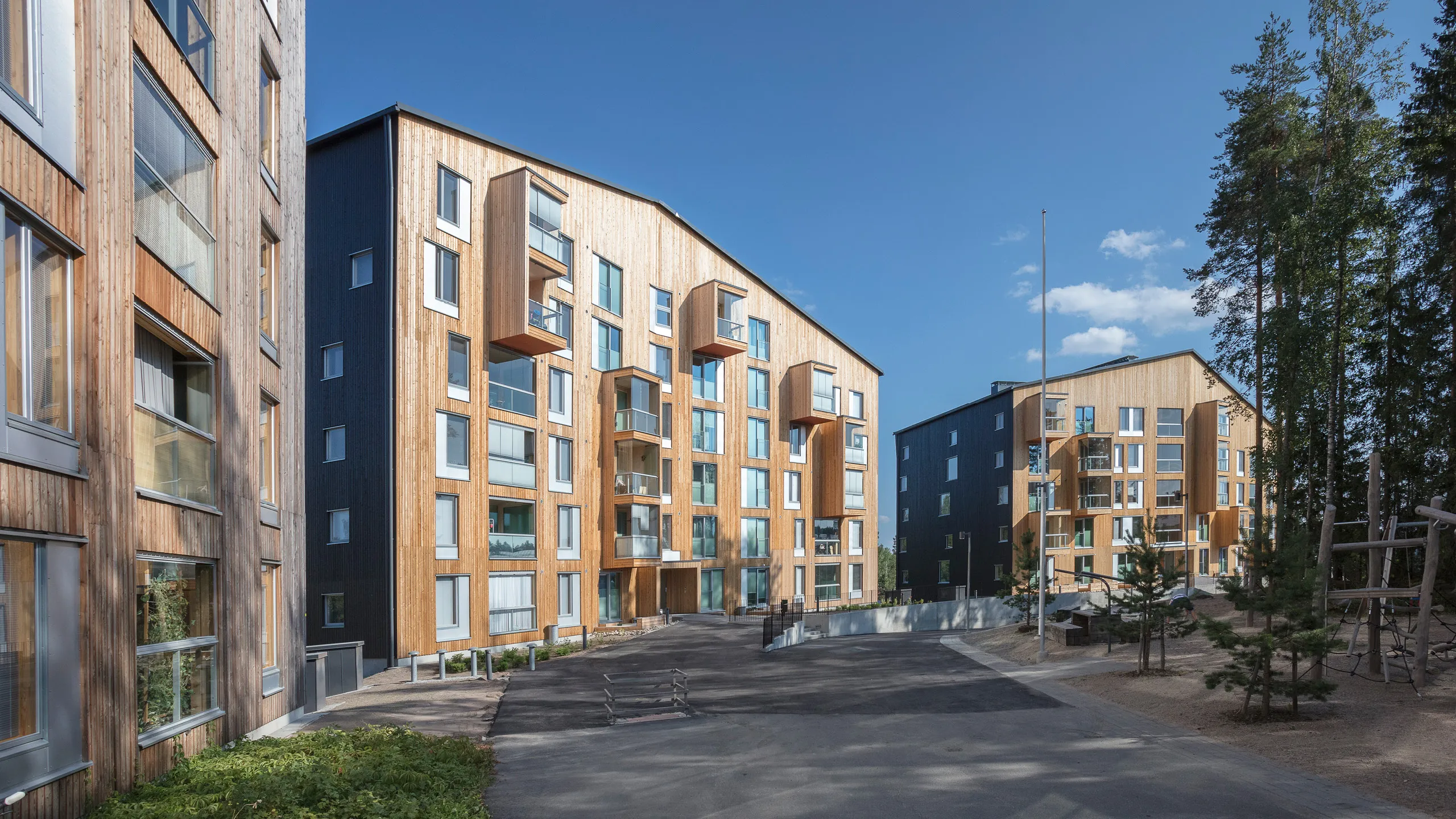
The architecture company Oopeaa designed a groundbreaking, award -winning residential project that shows the beauty of the timber building that reflects the sustainable urban life. The art of technical wood in Jyväskylä, Finland, led to affordable and high-quality innovative construction for a family home and developed into a multi-unit apartment.
Each apartment was developed with a modular design technology from prefabricated panels. Two modules, one for the living areas and the bedroom, and the other for the kitchen, bathroom and foyer offer a larger room. The facade is made of devastable wood (CLT) and emphasizes the inviting warmth of the wood, and the interiors concentrate on comfort. The use of wood improves air quality and reduces the effects of waste and the environment.
2. The smile installation
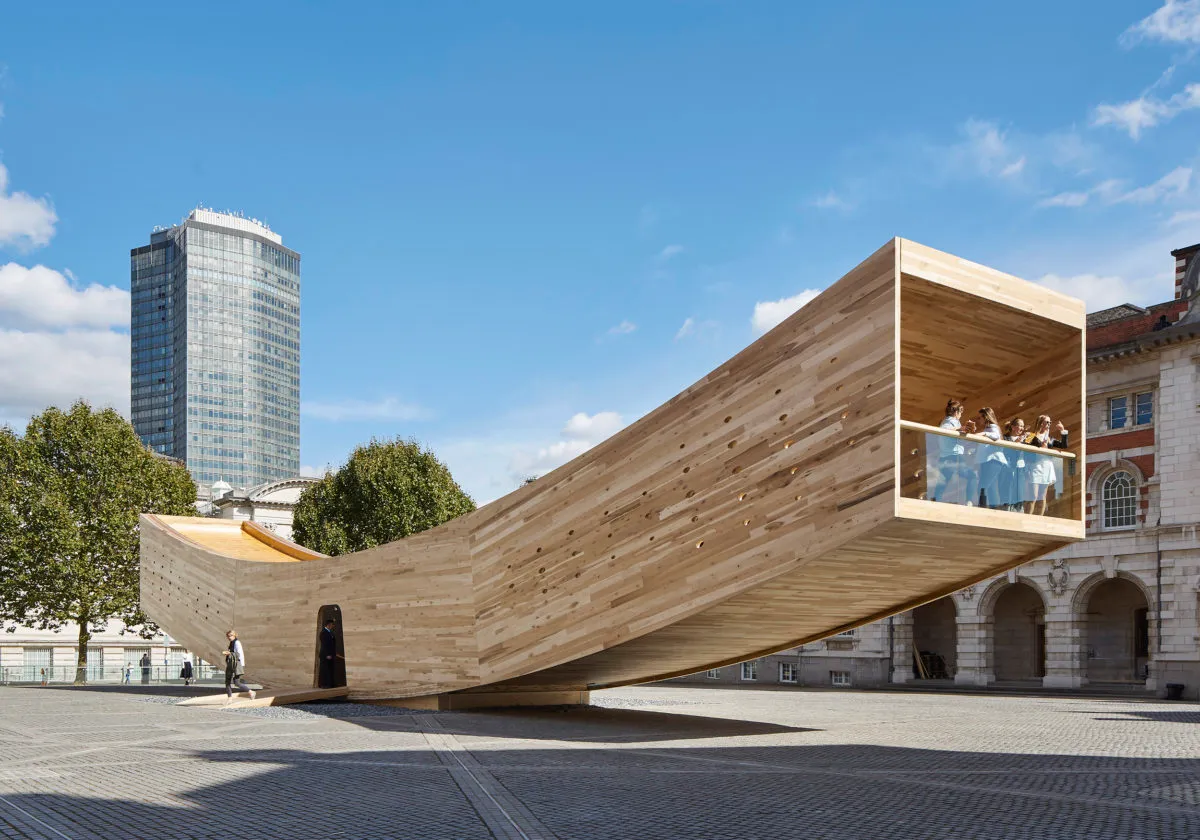
This playful installation, which is made of American Tulipwood, shows the hardwood crusaded wood (CLT), 12 panels from a 34 m long, 3.5 m high and 4.5 m wide mega tube. In cooperation with the American Hardwood Export Council (AHEC) and Arup, Alison Brooks Architects developed a sensory installation at the London Design Festival 2016. The structure offers structural and sensory potential of hardwood -CLT and shows a catestile viewing platform from a single Fullcrum, which is above the floor.
3. The Albina Yard
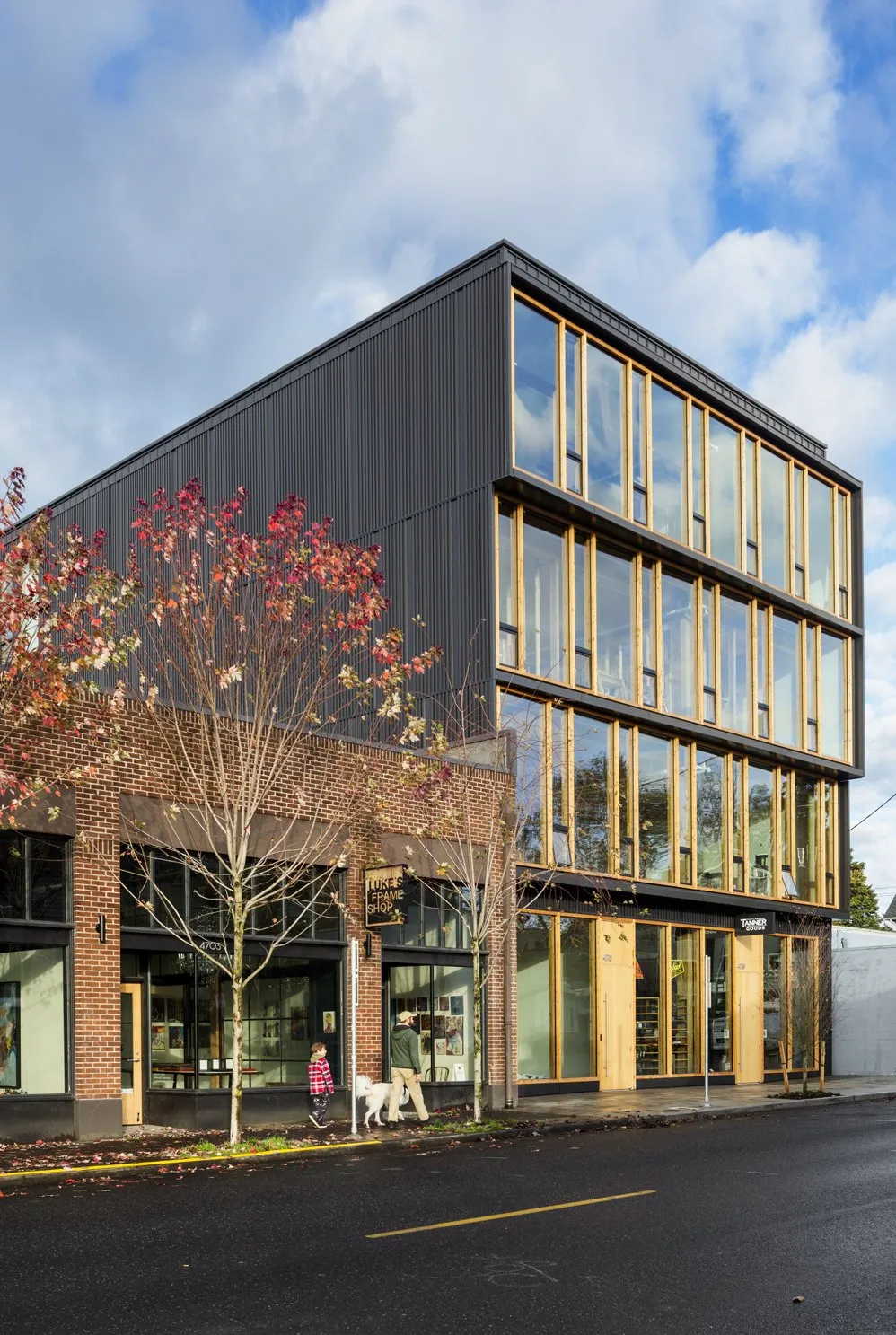
A four-story commercial building, designed by Lever Architecture in Portland, Oregon, is the first building in the USA that uses a structural system that consists exclusively of cross-laminated wood (CLT). The shape of the building material was accepted from three-lag-CLT panels and expressed simplicity and dynamic rooms. The design has 16,000 feet efficient rooms with plenty of natural light inside, which consist of a private courtyard and collaborative work areas.
With precision and complicated details, the columns and rays are prefabricated using CNC technology outside of the location to 1/8-inch tolerances. The outer combines corrugated iron and glass, while the Douglas -Fir -Glulam remains uncovered and extends into a structural wooden window wall system.
4. Moholt wooden towers
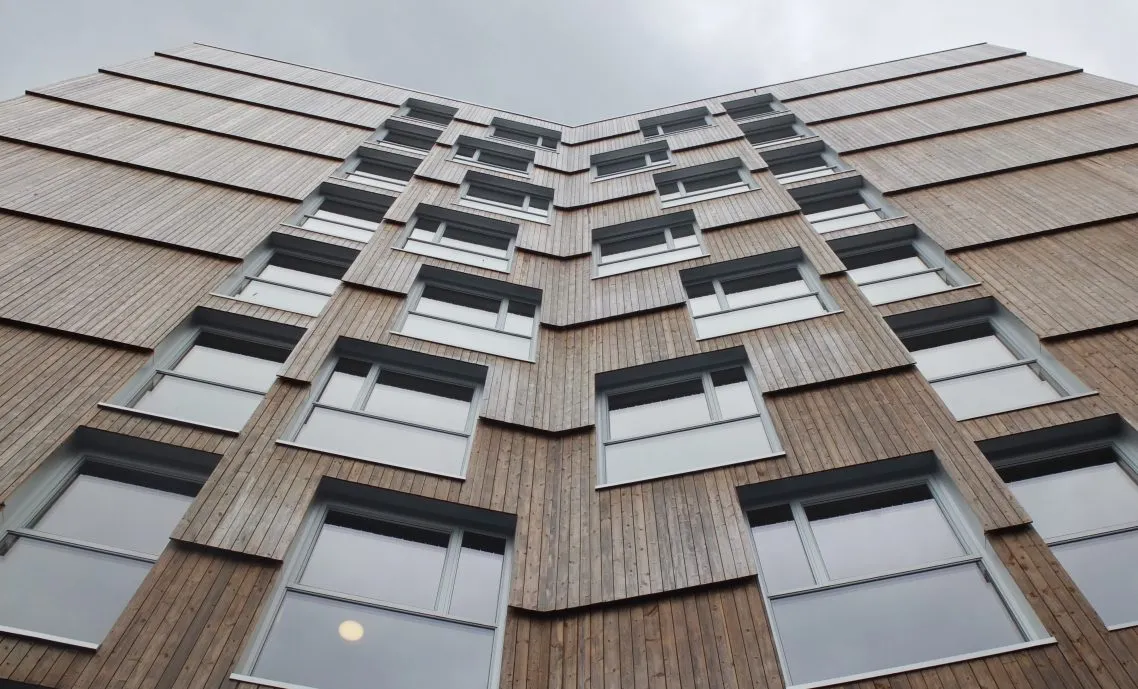
This nine -story structure in Trondheim, Norway, designed by MDH Arkitekter, shows mass wood construction. The project improves environmental performance, reduces CO₂ and creates a lively space for the student village. The shape took the shape of a y-shaped band that consists of a kindergarten, a library, a grocery store and various sports facilities that promote a feeling of community and urbanity. The facades are covered with Kebony pine plates treated and covered with fire -protecting stain and use robust strategies for passive house systems.
5. Nordtvet Farm kindergarten
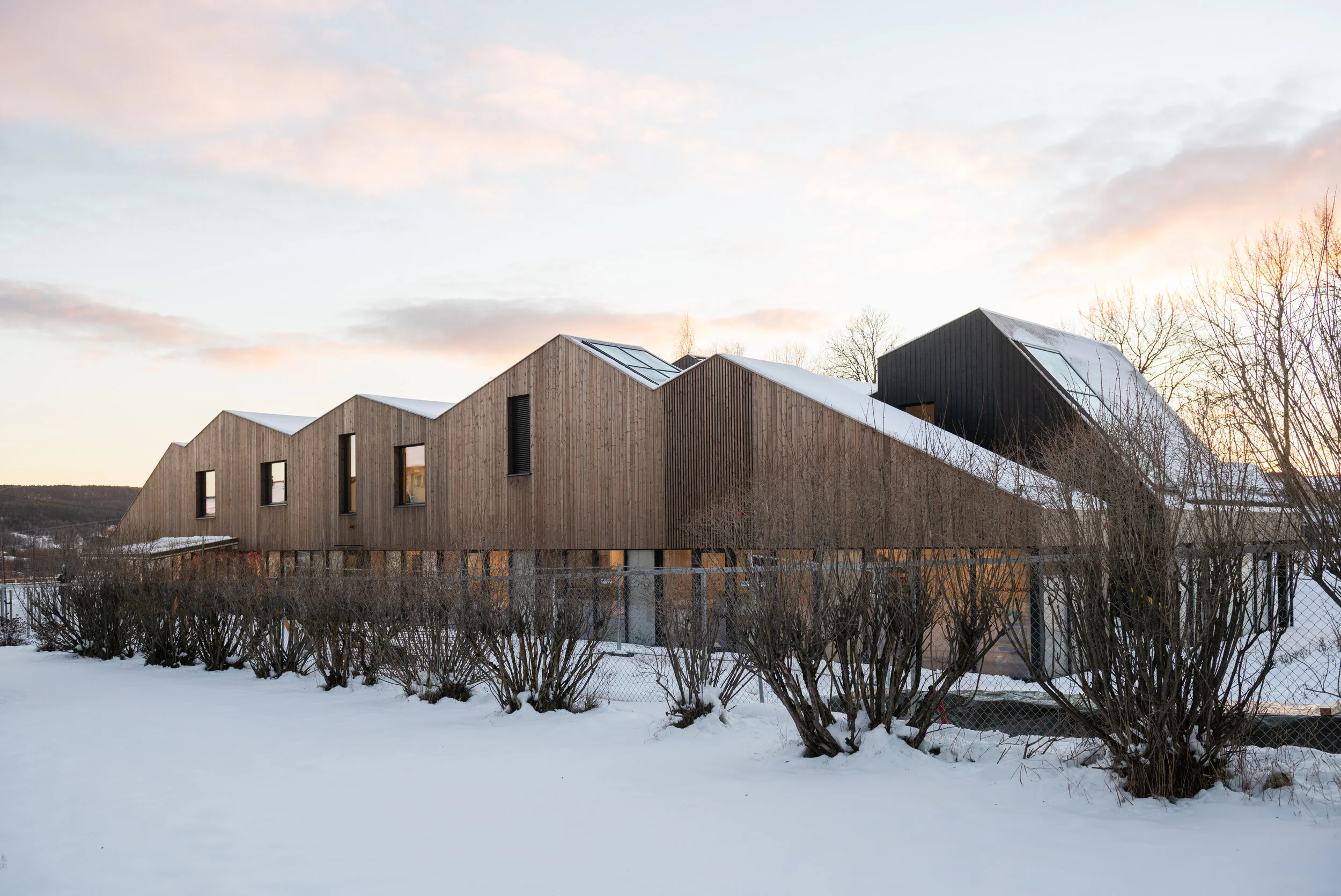
The childcare facility designed by Morfeus Arkitekter in Oslo, Norway, invites children and the community to create a dialogue and to promote a commitment to the community and to mix inner and outdoor areas. A sustainable construction with 3D production before the coward created a robust, comfortable interior environment. The load-bearing CLT system supports both structure and inner walls, while Norwegian Erzk-Kennes disguises the outer facades. The design of the Reggio Emilia's third teacher philosophy formed a pedagogical, sensory environment with a glazed facade, a playful gable roof with playing zones on the roof and the asphalt -free outdoor outdoor to strengthen the commitment to learning, community and ecological integrity.
6. Brock Commons Tallwood House
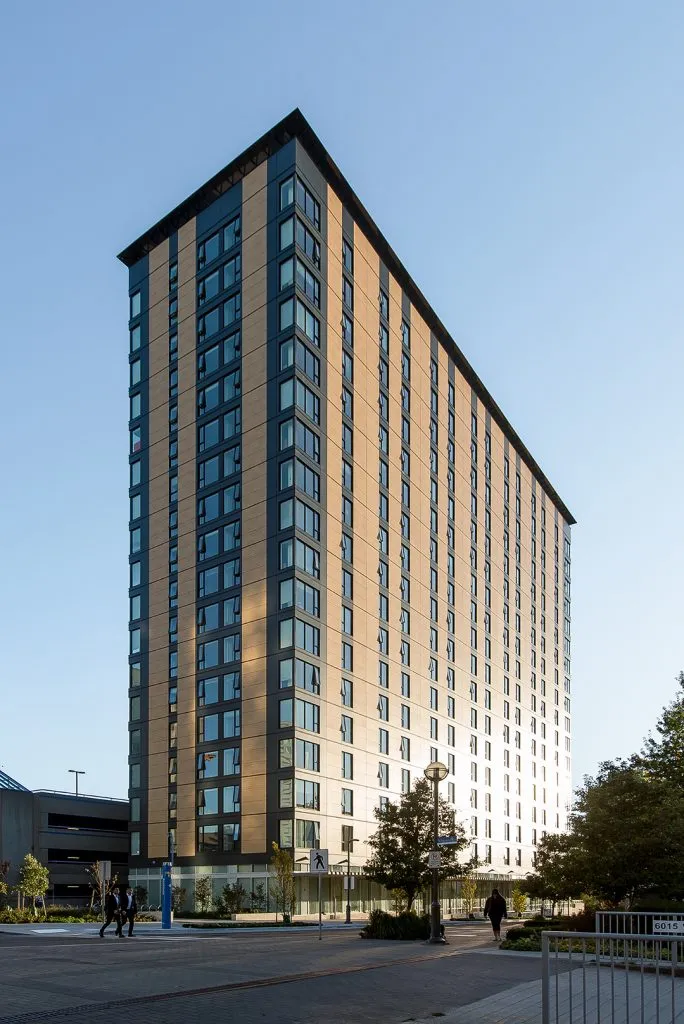
The Brock Commons Tallwood House in Vancouver, Canada, becomes the highest contemporary mass wood hybrid building in the world, which consists of an 18 -story student apartment on the UBC Point Grey Campus. It consists of 272 studios, 33 units with four bedrooms and a social assembly room. Acton Ostry Architects Inc. imagined a structure that was deeply rooted in sustainability, simplicity and environmental reaction. The team pushed challenges with the hybrid wood structure, and its complexity led to the soils made of cross-laminated wood (CLT) panels, which are supported by adhesive laminate wood (glulam) and parallel strand (PSL) columns.
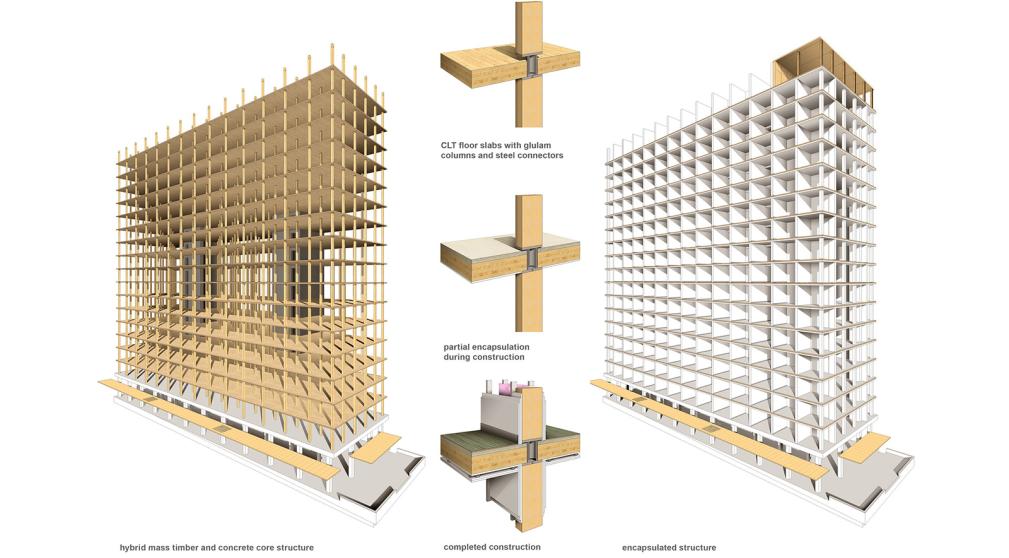
7. Hoho Vienna
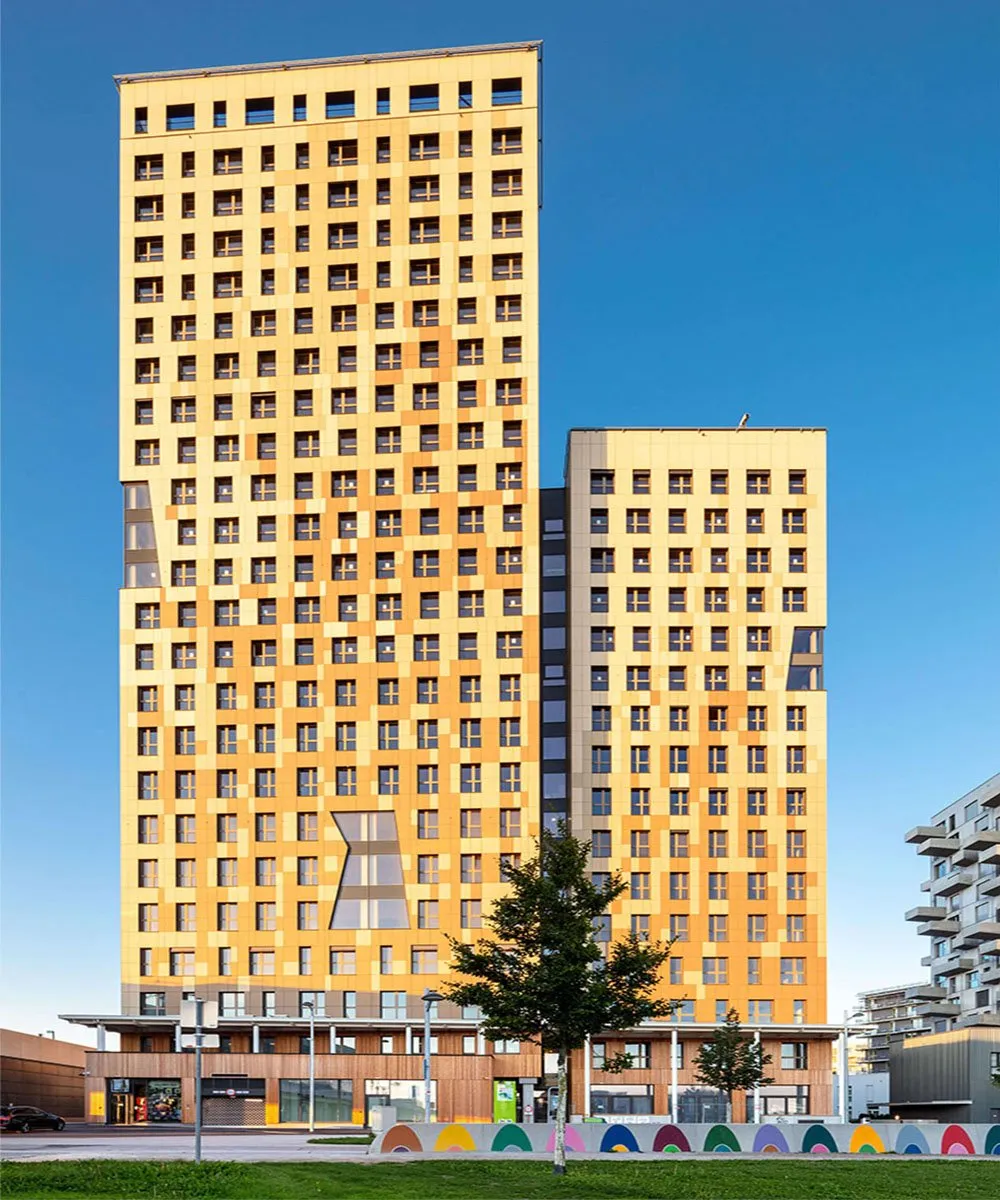
Hoho Vienna in Vienna, Austria, is a pioneer of modern construction and is the highest hybrid wooden building in the world, which reflects the sustainable building material for urban skyscrapers. RLP Rüdiger Lainer + Parter Architect has developed a structure that reflects the wood as an efficient and sustainable alternative to steel and concrete construction. The mainly wood structure of the building saves a considerable amount of CO2 emissions compared to a conventional concrete building. A 24-storey building was inspired by tree bark, which resulted in the natural aesthetic and flexible interior with movable partitions and adaptability over time. The 82-meter development with mixed use includes offices, retail stores, cultural space, residential buildings and wellness zones that connect different functions into a roof.
8. T3 building in Minneapolis
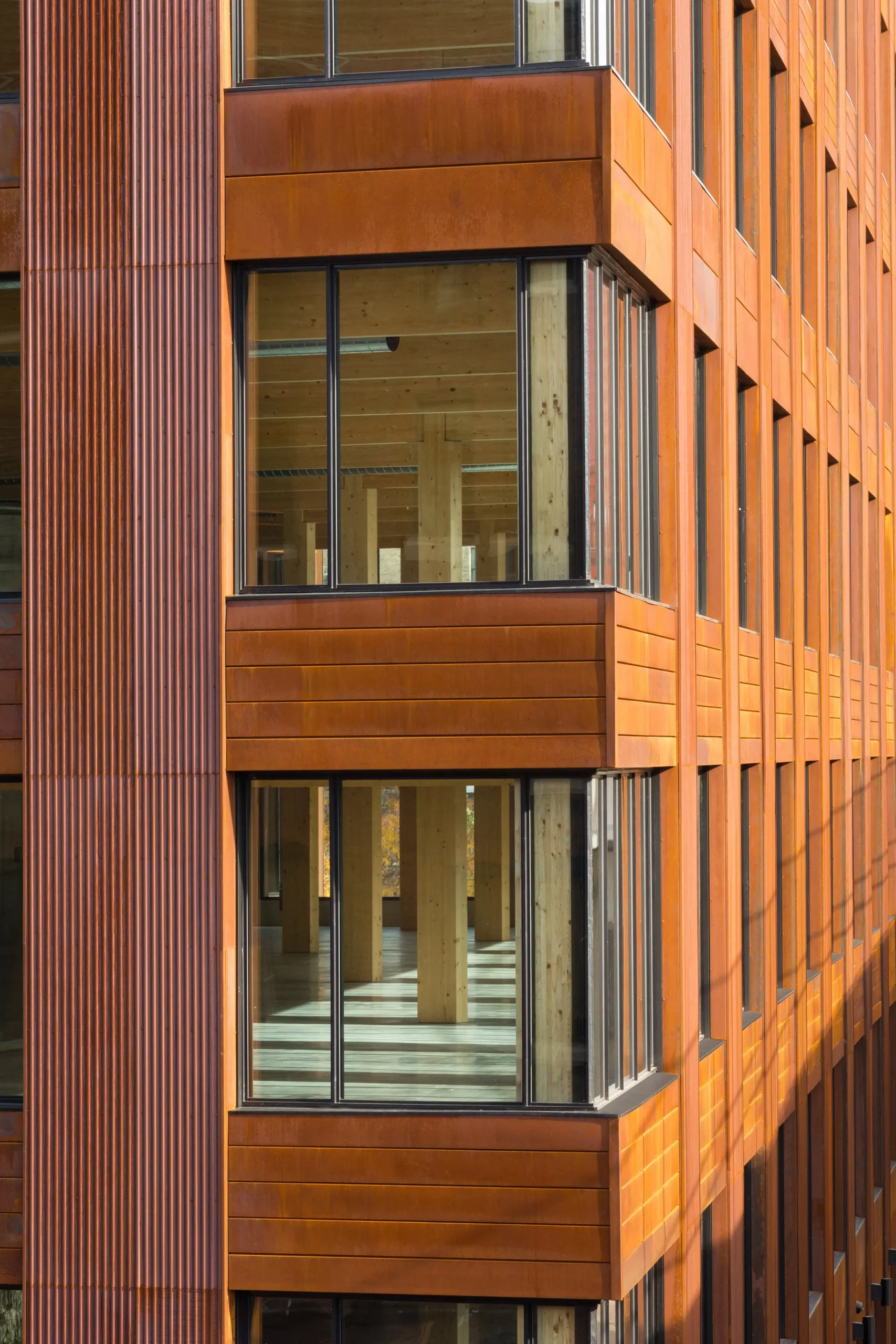
In cooperation between Michael Green Architecture (MGA), this project was developed as a design architect and DLR group and is a living prototype for modern sustainable office space. As the name suggests, T3, which consists of wood, technology and transit, developed with these elements as nuclear philosophy. In order to create a creative office area, the design aims to offer comfort and a warm and inviting environment with exposed wood as an important design element. To swing with the surroundings, shape and facade were framed with weathering (Corten Steel). The interior accepts the open layout and maximizes the natural light, high ceilings and exposed timber construction.
9. High
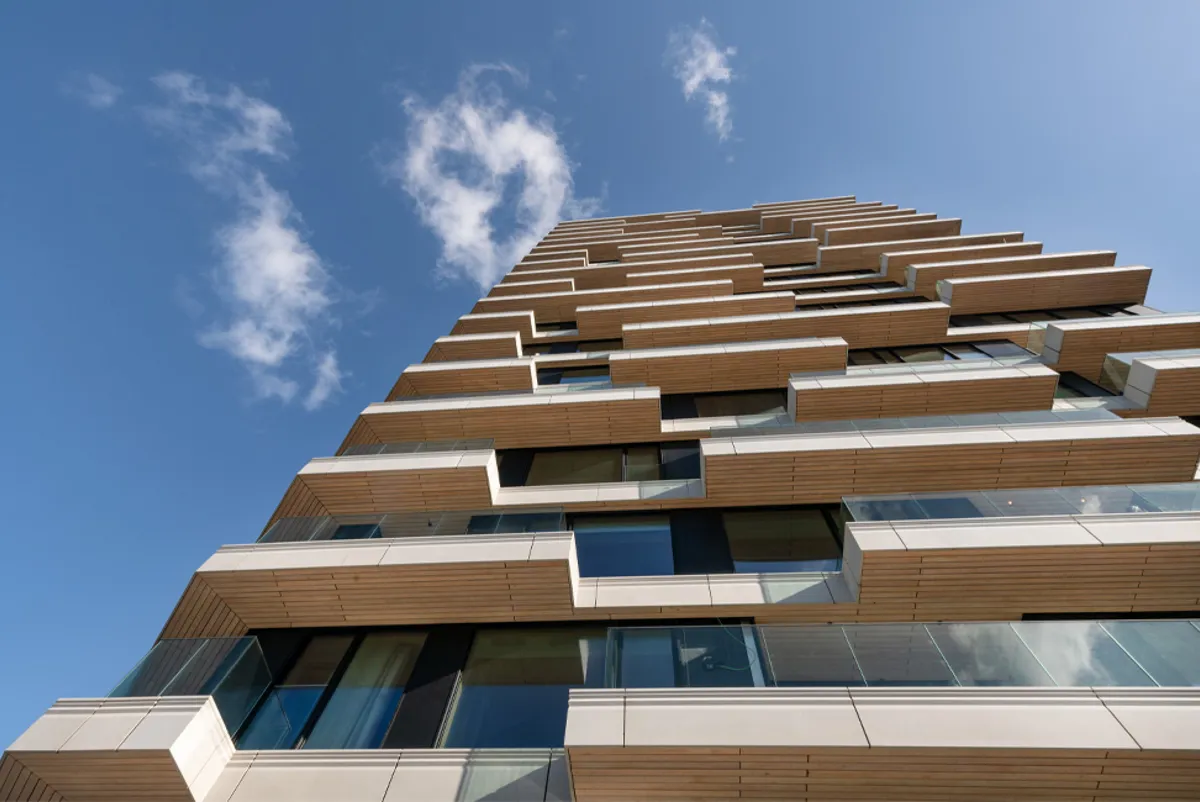
Team V Architecture In collaboration with Arup and wooden specialist Brüninghoff, the hybrid residential building in Amsterdam, Netherlands prefabricated by CLT. 73 meters high with 21 floors and comprises apartments, commercial space and common amenities. Inspired by French skin couture and Dutch Hout (wood), the names illustrate the fascinating wooden construction. The characteristic design element stands as a balcony with its irregular pattern, the glass ends of full-shirg and the light gray bind as well as the wooden deck projections in sharp corners, which leads to a striking, expressive form. This project includes the goal of the climate neutrality of Amsterdam until 2050.
10. Sara Cultural Center

White Arkitekter designed a cultural center in Skellefe Å, Sweden, a city with a rich tradition of timber construction. The project represents the wood from the region and the exposed wood structure that combines traditional material with modern sensitivity. A joint center was intended with a sustainable ethos, not only as carbon -neutral, but also in its life cycle.
The design aims at accessibility and inclusiveness, whereby the rooms are open and flexible and promote interaction and collection. The hotel's architecture overtakes 20 floors and combines a mixed complex with a low cultural center. It is an explanation of the new generation of high-rise buildings that integrate art, a community hub and a strong explanation of environmental responsibility at once.
